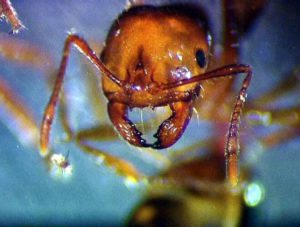The true damage of invasive alien species was just revealed in a landmark report. HereŌĆÖs how we must act.
Invasive alien species are driving biodiversity loss and extinctions in every country, all over the world.
Responding to the challenge, the United Nations is today releasing the of invasive alien species and their control.
It comes from the , which represents almost 140 member states.
Over four years, 86 expert authors from 49 countries gathered the latest scientific evidence and Indigenous and local knowledge on invasive alien species. The report draws on more than 13,000 references, including governmental reports. We were among the authors. Here are some of the key insights for Australia and Aotearoa New Zealand.
Hope in the face of increasing threats
In 2019, IPBES released a that placed invasive alien species in the top five drivers of biodiversity loss - alongside changing land- and sea-use, over-exploitation of natural resources, climate change, and pollution.
This triggered further assessment to determine the current global state of biological invasions, the effectiveness of our existing responses, and recommended management and policy options.
The result, released today, is the most comprehensive overarching policy-relevant report on biological invasions to date.
It promises to help us meet our international obligations under the recently adopted UN . In particular, one of the targets in the Kunming-Montreal is to ŌĆ£eliminate, minimise, reduce and/or mitigate the impacts of invasive alien species on biodiversity and ecosystem servicesŌĆØ.
The world faces increasing biosecurity threats, but effective management can prevent or lessen the extent of subsequent biological invasions. Ambitious progress can be achieved with an integrated approach.
The experience in Australia and Aotearoa New Zealand
Australia already has close to introduced alien species. Aotearoa New Zealand has almost .
Globally, we observe around 200 new alien species every year, and many of these species (>10%) have negative impacts, including threats to native species, the health of natural vegetation, or the way ecosystems work.
Australian examples include , and .
Aotearoa New Zealand suffers from invasive Australian . And the M─üori cultural icon the Kauri tree is under siege from a deadly .

The red fire ant is one of the better known alien invaders in Australia. AAP Image/Queensland Department of Primary Industries.
The assessment reveals that invasive alien species have contributed to 60% of global extinctions, and have been the sole driver of 16% of recorded extinctions.
and have among the highest modern global native species extinction rates. Australia is the worst in the world , while Aotearoa New Zealand has experienced tragic loss in , largely due to invasive species.
The economies of both countries rely heavily on agriculture, trade and eco-tourism. These sectors are highly susceptible to threats from invasive alien species. The cost to Australia is out of an estimated global cost of $654 billion ().
The cost of biological invasions is quadrupling every decade, but stringent biosecurity policies and practices can protect our environment and economies. They also safeguard our wellbeing and cultural and social livelihoods.
Continued cooperation and investment across our region is paramount to preventing future impacts from increasing threats. These include and .
At the same time, already established invasive alien species can supercharge environmental disasters. For example, the wildfire-promoting properties of introduced exacerbated this year.
Coordinate, consult and prioritise
An effective biosecurity system can mitigate the threats from invasive species. But to do so, weŌĆÖll need coherent policy across primary production and logistic sectors, better education and greater public awareness.
We need to coordinate and prioritise our efforts, from offshore ports to border control and quarantine, through to eradication or containment of any new pests and weeds.
Government-industry partnerships are leading to trusted ŌĆ£green-laneŌĆØ trade supply chains. This cuts red tape for businesses that manage import risks and produce pre-costed and co-designed emergency response agreements.
Prevention will not stop arrivals altogether. We will still have to contend with blow-ins on storm winds, and boat hulls. ThereŌĆÖs also the $23 billion a year .
Biosecurity tools work best alongside strong public support, regulation and governance. We share a proud history of effective biological control programs for many . AustraliaŌĆÖs approach to was a world-first and it remains in use 70 years later. This has delivered benefits worth more than .
Despite strong biosecurity measures, highly engaged primary industries agricultural industries, excellent research infrastructure and a high level of public awareness, invasive alien species continue to and multiply.
We tried to defend our countries against recent invasions from the , and the . But they have still managed to establish.
One world, ŌĆśOne BiosecurityŌĆÖ
The rising pressure of trade will likely outpace the resourcing dedicated to biosecurity measures. Frequent interceptions of pests, weeds, and diseases at our border highlight the pressure we are under. We will have to simply become smarter, more effective, and better coordinated across the .
We encourage governments to recognise the threats invasive alien pests pose and mobilise their resources and capability to combat these threats ŌĆō in regions where a species is first recognised as going rogue, rather than simply monitoring its progressive global spread. This is the .
Australia and Aotearoa New Zealand can play a much stronger leadership role in . After all, lax border protocols in our neighbourhood help pests and diseases end up on our doorstep.
Research Director CSIRO Health & Biosecurity, CSIRO; ▒╩░∙┤Ū┤┌╠²Professor, La Trobe University; ▒╩░∙┤Ū┤┌╠², Distinguished Professor in Pest Management and Conservation, Lincoln University, New Zealand; and Č┘░∙╠²Australian Research Council Industry Laureate Fellow, │╔╚╦┤¾Ų¼.
This article is republished from╠²╠²under a Creative Commons licence. Read the╠².

Newsletter & social media
Join us for a sensational mix of news, events and research at the Environment Institute. Find out about╠²new initiatives and╠²share with your friends what's happening.
╠²╠²╠²
